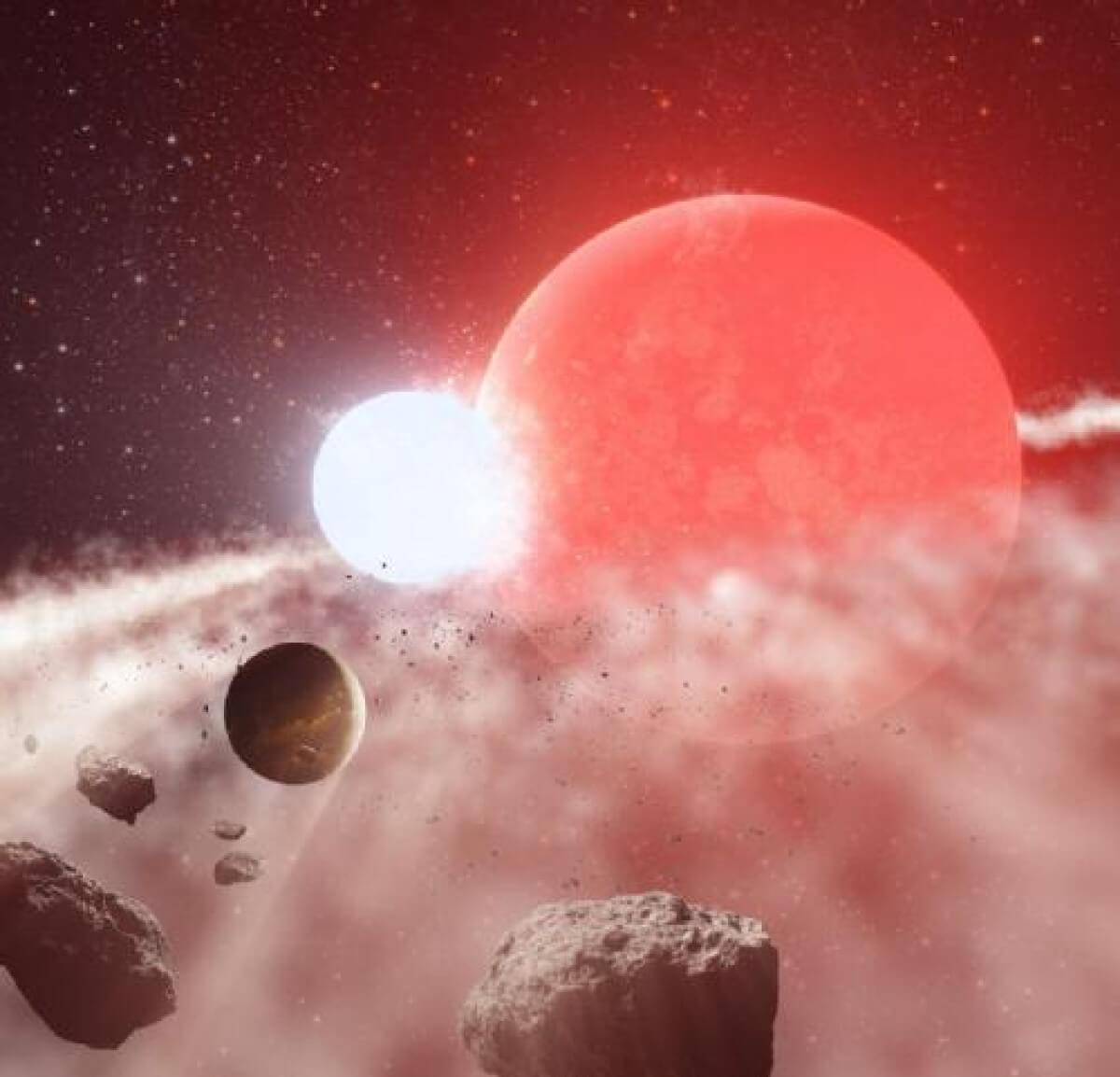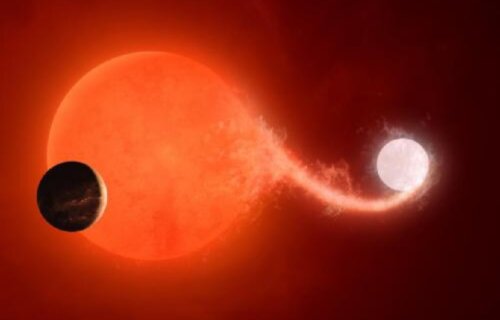COVENTRY, United Kingdom — Astronomers have found another “impossible” planet out in space that is defying our understanding of the universe. According to an international team, this mysterious planet, just 520 light years away from Earth, should not even exist in its home solar system.
The Jupiter-like gas giant defies all logic, somehow escaping engulfment by its host star. The planet, called 8 Ursae Minoris b, orbits a decaying sun known as K-type star — which is slightly cooler than our Sun and orange in color. As these stars balloon outward, anything too close is swallowed up. However, 8 Ursae Minoris b has survived.
“The distance between the Earth and its star, the sun, is 1 astronomical unit, or 1 au. 8 Ursae Minoris b is orbiting its star at 0.5 au. While the distance is not unusual in itself, what is strange is that the star is in the process of dying, having already spent some of its fuel,” says Dr. Dimitri Veras from the University of Warwick.
“When a star spends fuel, it expands in size significantly. This star would have already expanded its size to 0.7 au, which should have engulfed and destroyed the planet. So it’s very unusual that the planet still exists.”
The international team also analyzed reasons for the strange phenomenon and came up with two possible ideas.
“The first, more plausible argument, is that the star once had a companion star (a ‘binary star’), that quenched its increase in size, allowing the planet to survive. This binary companion eventually merged with the main star, and now just appears as a single star,” Dr. Veras in a university release.
“The second theory, which is less widely explored, again invokes a binary companion. This time the merger of the two stars produced a disc from which this planet was generated – known as a second-generation planet,” the study co-author continues.
“The wider impact is a better understanding of the evolution of stars like our Sun and the evolution of planets like those we see in the solar system, and the need to look out for additional unusual cases like the observed system. Sometimes the rarest cases can reveal the most about stellar and planetary physics.”
“Understanding these rare planetary systems enables us to learn new ways in which planets and stars evolve, and motivates us to discover even more rare examples.”

The resilient planet lies in the constellation of Ursa Minor, located in the northern hemisphere of our sky. A year lasts only 93 days, about a quarter of one on Earth. After 12 months, the planet will have completed four orbits of its star.
“Most stars are in binary systems, but we don’t yet fully grasp how planets may form around them. It is plausible that many more peculiar planetary systems may exist due to the influence of binary companions,” adds study author Marc Hon from the University of Hawai’i.
The findings, published in the journal Nature, are based on information collected by NASA’s alien hunter TESS (Transiting Exoplanet Survey Satellite).
“This is a great example of the detailed, forensic studies we can now perform thanks to the latest data, including using the natural oscillations of the host star (asteroseismology) observed by the TESS space telescope to confirm beyond any doubt that the star is a core-helium-burning red giant,” concludes Professor Bill Chaplin from the University of Birmingham.
You might also be interested in:
- Impossible planet? Astronomers find world with an atmosphere that ‘shouldn’t exist’
- Hell on Earth? Astronomers discover devilishly hot exoplanet orbiting its star’s equator
- Alien life nearby? 2 Earth-like planets discovered in habitable zone just 16 light years away
- Best Of The Best Telescopes For Beginners In 2023: Top 5 Stargazers Most Recommended By Experts
South West News Service writer Mark Waghorn contributed to this report.


Can’t wait for the day when all of these space “anomalies” are discovered to just be a misreading of the vague data these ideas are gleaned from.